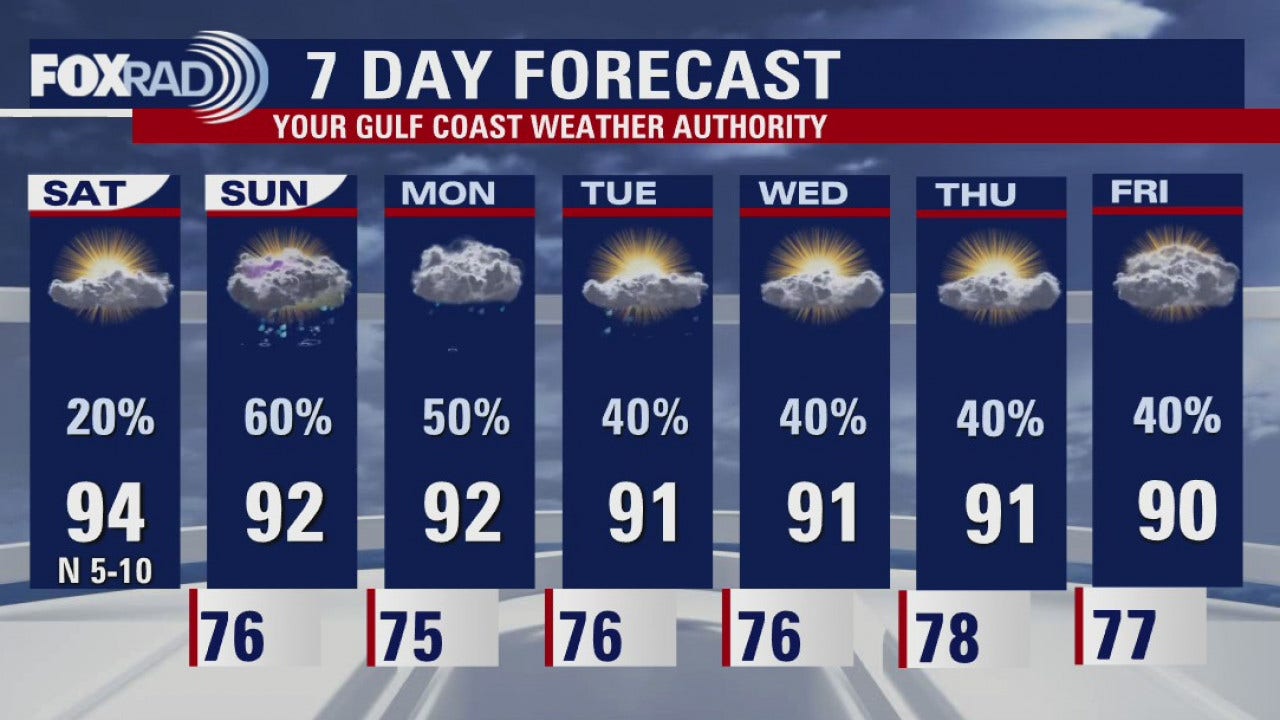
The trade winds are expected to gradually weaken starting late Monday, which will allow local nighttime land breezes and afternoon sea breezes to develop from Monday night into mid-week. Locally breezy trade winds combined with stable atmospheric conditions will result in a dry trade weather pattern through early Monday. North winds up to 15 mph shifting to the northwest in the afternoon. Highs 83 to 88 near the shore to 69 to 76 above 4000 feet. Monday: Mostly sunny with isolated showers. Lows around 74 near the shore to 51 to 60 above 4000 feet. Highs 84 to 89 near the shore to 70 to 77 above 4000 feet. North winds up to 10 mph shifting to the east around 10 mph in the afternoon. Highs 81 to 87 near the shore to around 71 at 4000 feet. Monday: Partly sunny with scattered showers. East winds up to 20 mph becoming 10 to 15 mph in the afternoon.

Highs around 86 near the shore to around 75 near 5000 feet. Monday: Sunny in the morning then becoming partly sunny. Northeast winds up to 15 mph increasing to 10 to 15 mph after midnight. Lows around 71 near the shore to around 55 near 5000 feet. Tonight: Mostly cloudy with isolated showers in the evening, then mostly clear after midnight. East winds 10 to 20 mph decreasing to up to 20 mph in the afternoon. Highs around 86 near the shore to around 76 near 5000 feet. East winds 10 to 20 mph shifting to the northeast in the afternoon. Lows around 67 near the shore to 55 to 64 near 3000 feet. Isolated showers in the morning, then scattered showers in the afternoon. Lows 70 to 75 near the shore to around 56 near 5000 feet. Tonight: Mostly cloudy with scattered showers in the evening, then partly cloudy with isolated showers after midnight. Highs 83 to 88 near the shore to 68 to 74 near 5000 feet. Today: Sunny in the morning, then partly sunny with isolated showers in the afternoon. Lows 65 to 72 near the shore to around 54 at 4000 feet. Tonight: Mostly cloudy with scattered showers. Northeast winds 10 to 15 mph decreasing to up to 15 mph in the afternoon. Highs 82 to 88 near the shore to around 72 at 4000 feet. This material may not be published, broadcast, rewritten or redistributed.Today: Partly sunny with scattered showers. We don’t know yet when those will start being issued.Ĭopyright 2022 Sunbeam Television Corp. The Hurricane Center is now actively working on seven day forecasts. Jack Bevin: “You put it all together, we have improved our capabilities a lot, of monitoring the storm, tracking the storm and forecasting the storm.” Hurricane Hunter Pineda: “This is the transmitter right here that sends all the data back to the aircraft.”Īnother big advancement: weather satellites that can take pictures above a hurricane every 30 seconds.ĭr. Now ,the dropsondes allow them to check wind speed in the actual eye of the storm. Jack Bevin: “We got these new fancier dropsondes in, start throwing them out into the strongest part of the hurricane eyewall and made some very interesting discoveries about how the hurricane worked.”īut when Andrew hit, scientists could only measure wind speed at 10,000 feet above ground. He has been on the front lines to see all of the changes, which have led to better and more accurate forecasts today.ĭr. at Florida State and doing intern work at the Hurricane Center.” Jack Bevin is now a senior storm specialist for the NHC.ĭr. Jack Bevin: “Now we are issuing watches 48 hours in advance and warnings 36 hours in advance as compared to back in 1992.”ĭr.

This is the track scientists can currently study when a storm is three days away from landfall, and this is technology they had when Andrew was one day away from landfall in 1992, which means we now know days earlier where a storm is going to hit.Īnd that means people are now getting earlier and better warnings so they can prepare.ĭr. Here’s another example of how far forecasting has come. This tighter cone is the result of new technology that gives forecasters a better understanding of how hurricanes work. Now, compare that to today, this little circle represents where the cone would be focused three days out from a storm making landfall. If they would have used the cone of concern, it would have looked something like this. It’s a large area, and scientists could only say the storm would hit somewhere in here. Jack Bevin, Senior Storm Specialist, National Hurricane Center: “In 1992, we were only making three-day forecasts.”Ĭheck this out, back in 1992, this was the predicted three-day track for a hurricane.


 0 kommentar(er)
0 kommentar(er)
